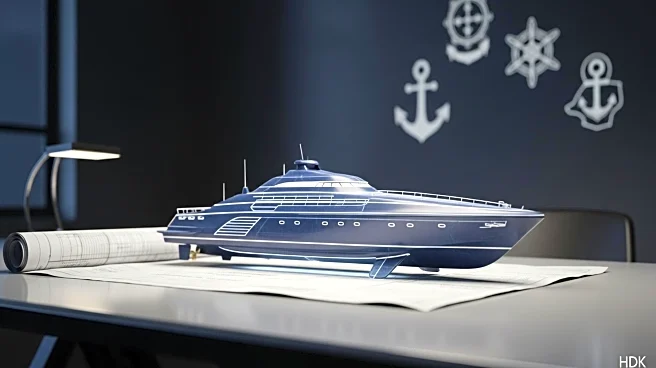What's Happening?
The maritime industry is experiencing a surge in demand for retrofits due to new environmental regulations, including the EU emission trading scheme and FuelEU Maritime requirements. This has led to increased repair yard days, particularly for capesize ships, as owners seek to comply with regulations such as the Carbon Intensity Indicator (CII) and the EU ETS. According to UK consultancy Drewry, these retrofits involve propulsion-improving devices, energy-saving technologies, and hybrid systems, which are essential to meet upcoming regulations and avoid penalties. The demand for retrofits is expected to absorb vessel capacity, tighten supply, and boost utilization of vessels still on the water. The situation echoes previous retrofitting phases, such as those ahead of the 2020 sulphur cap and the 2022 Energy Efficiency Existing Ship Index (EEXI) regulations.
Why It's Important?
The increased demand for retrofits is reshaping supply fundamentals in the maritime industry. As vessels undergo retrofits, the effective supply is reduced, leading to higher utilization rates for the remaining fleet. This dynamic is expected to intensify as regulatory deadlines approach, potentially leading to scheduling bottlenecks in repair yards. The retrofitting cycle may also accelerate the retirement of older vessels, further reducing fleet capacity. Owners who act early to secure yard slots may gain a competitive advantage, while those who delay could face higher costs and longer lead times. The situation highlights the importance of strategic planning and investment in energy-efficient technologies to comply with regulations and maintain operational efficiency.
What's Next?
As the demand for retrofits continues to grow, shipowners will need to plan dry-docking schedules well in advance to secure yard slots. The regulatory wave is expected to reshape supply fundamentals, with capacity being curtailed by both short-term retrofits and long-term fleet attrition. Owners may face longer waits for slots, adding unpredictability to scheduling and potentially stretching downtime further. The steepest climb in retrofit demand is anticipated in the late 2020s, as compliance deadlines, fuel-switch strategies, and decarbonization commitments converge. Owners will need to navigate these challenges to maintain operational efficiency and avoid spiraling compliance costs.
Beyond the Headlines
The current cycle of regulatory retrofits may lead to chokepoints in repair yards, as retrofits compete with a strong newbuild orderbook. The hesitation to heavily invest in retrofits is driven by regulatory uncertainty, including the potential repeal of the EU ETS and FuelEU Maritime by 2028. Owners may opt for dual fuel retrofits, which are expensive but necessary for long-term decarbonization. The situation underscores the need for strategic planning and investment in energy-efficient technologies to comply with regulations and maintain competitiveness in the maritime industry.











